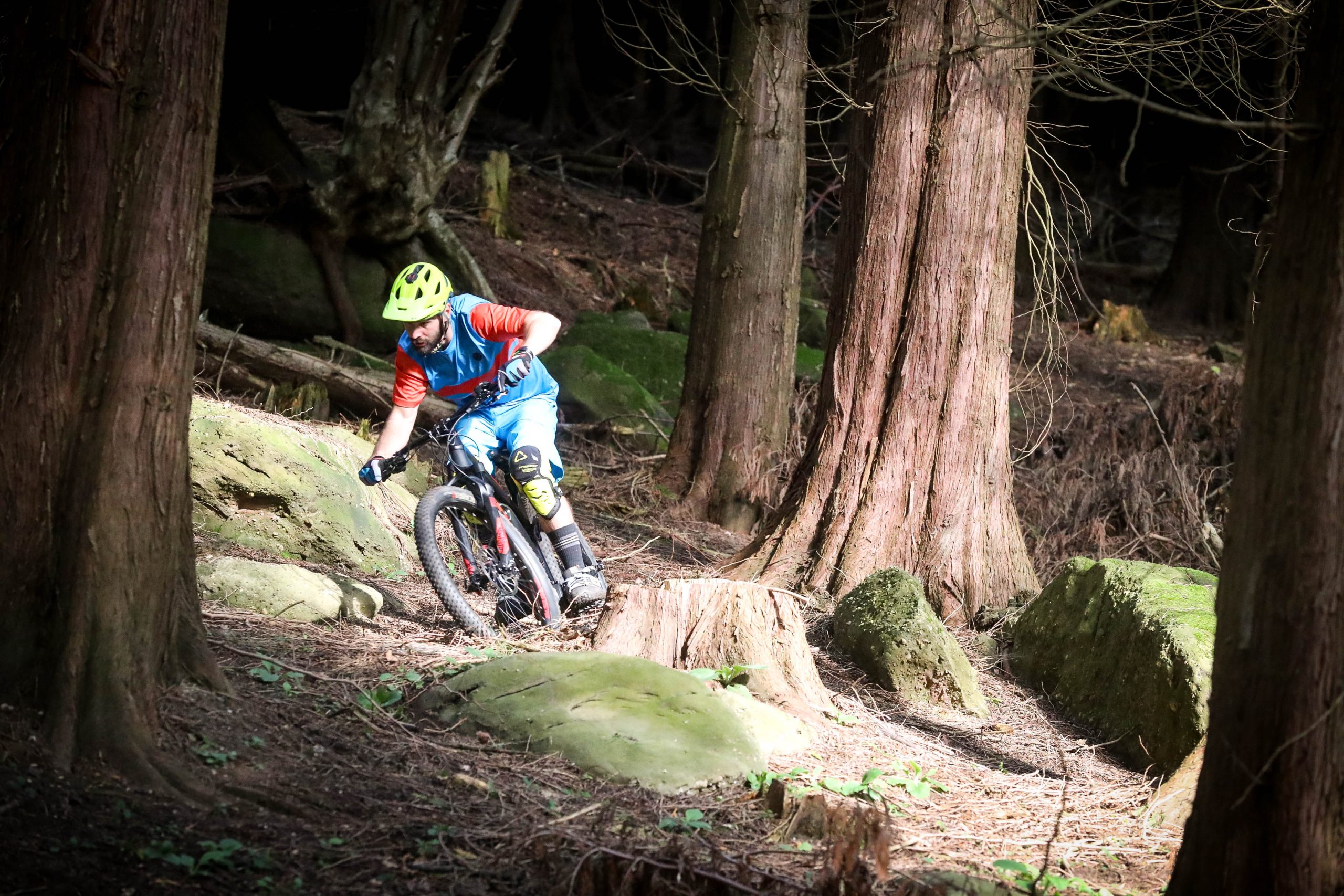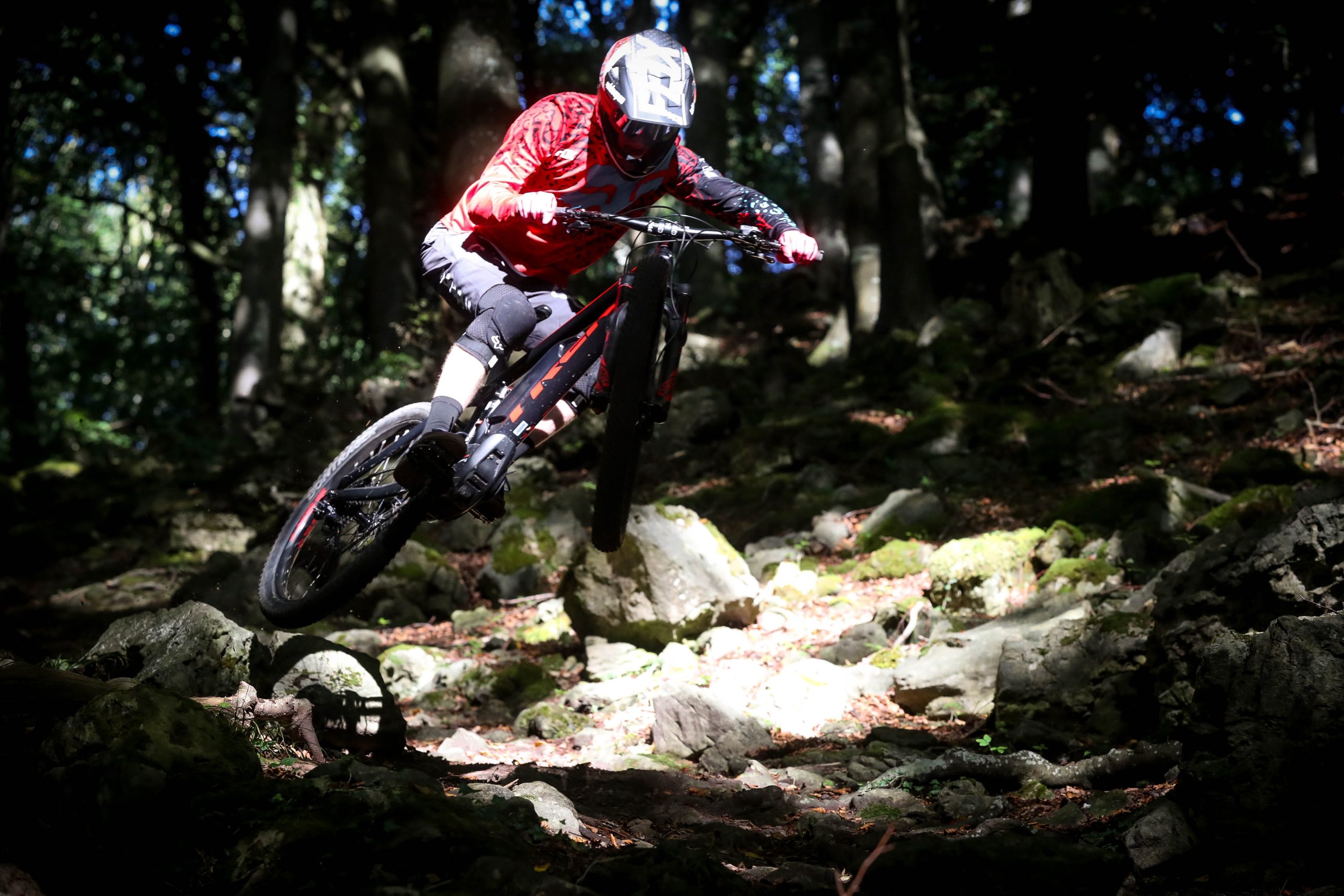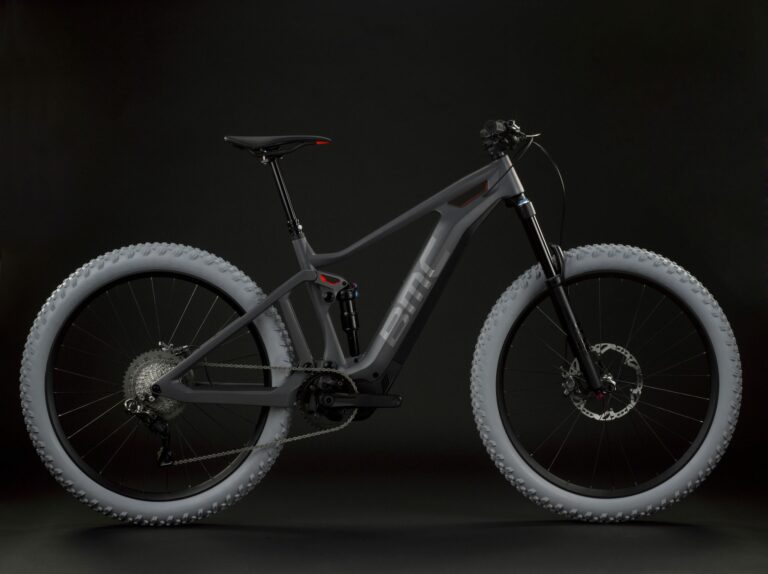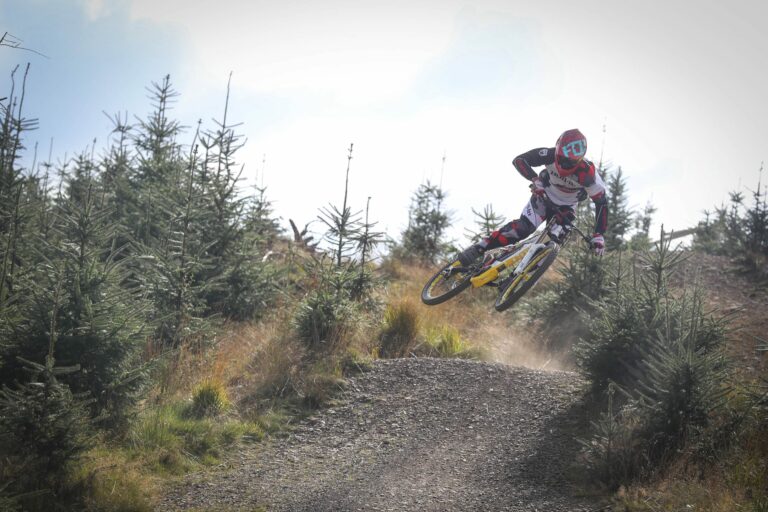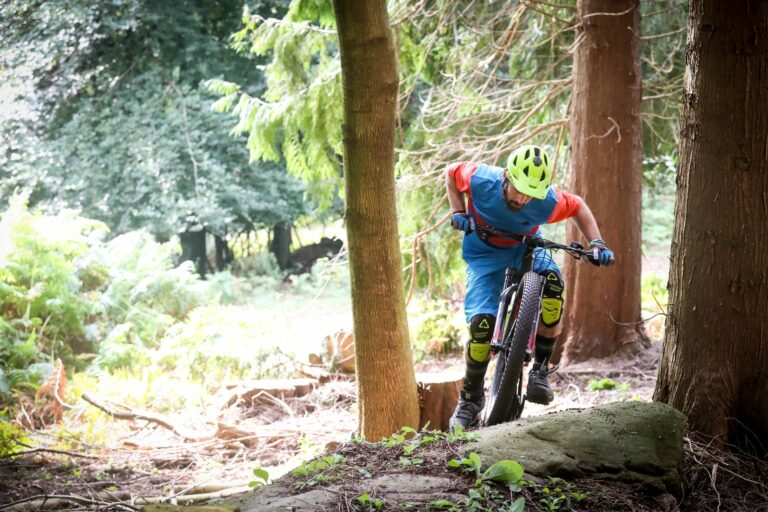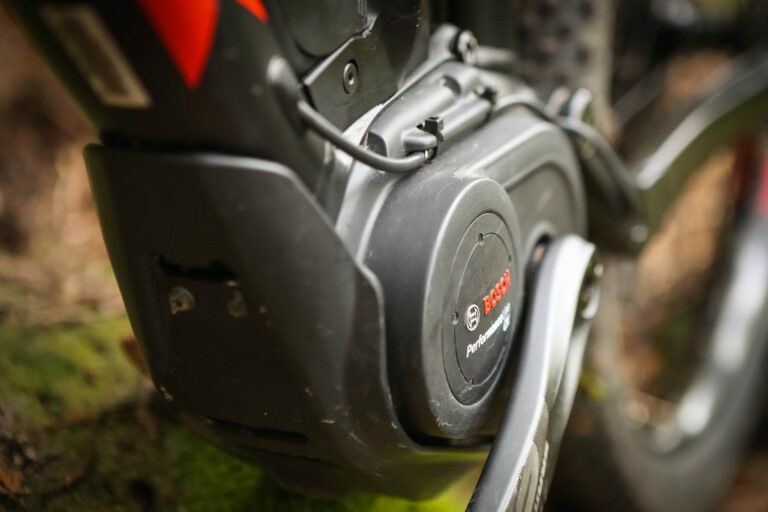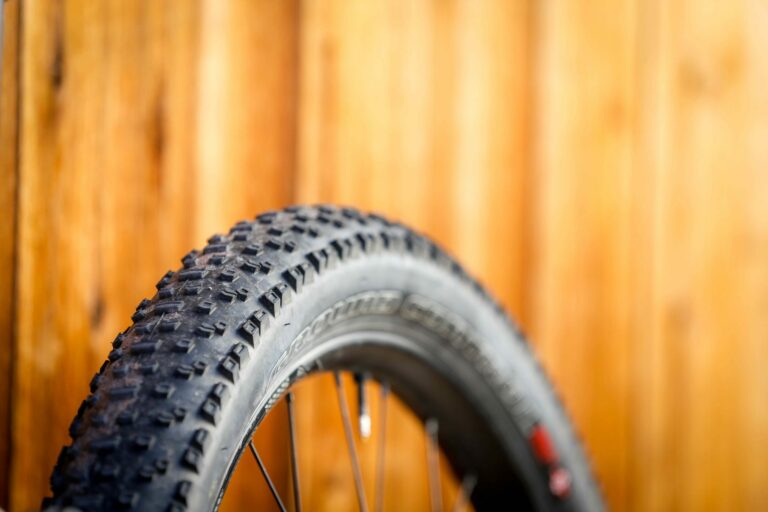Words and photos: Steve Jones
There’s the danger of going crazy.
There’s a need to understand that in as much as e-mtb does enable more riding, quicker, you have to bear in mind that there’s an element of enthusiasm and lack of understanding at work here which simply draws you in.
The speed seduces you to go as hard as you can. For many, the new type of effort is alien whereas on a standard mtb some riders have years of muscle memory, conditioning to overcome.
When comparing and contrasting mtb vs e-mtb, a quality 150mm or 160mm trail/enduro mtb makes an ideal comparison to e-mtb’s such as the 140mm Specialized Turbo Levo and 160mm Trek Powerfly in terms of what many people think they need out of such a bike.
We also think 140-160mm to be a good all-round e-mtb travel number. And a great challenge to many a hardened enduro character who regularly comes out with the phrase “when I can’t get up hills any longer I’ll think about it.”
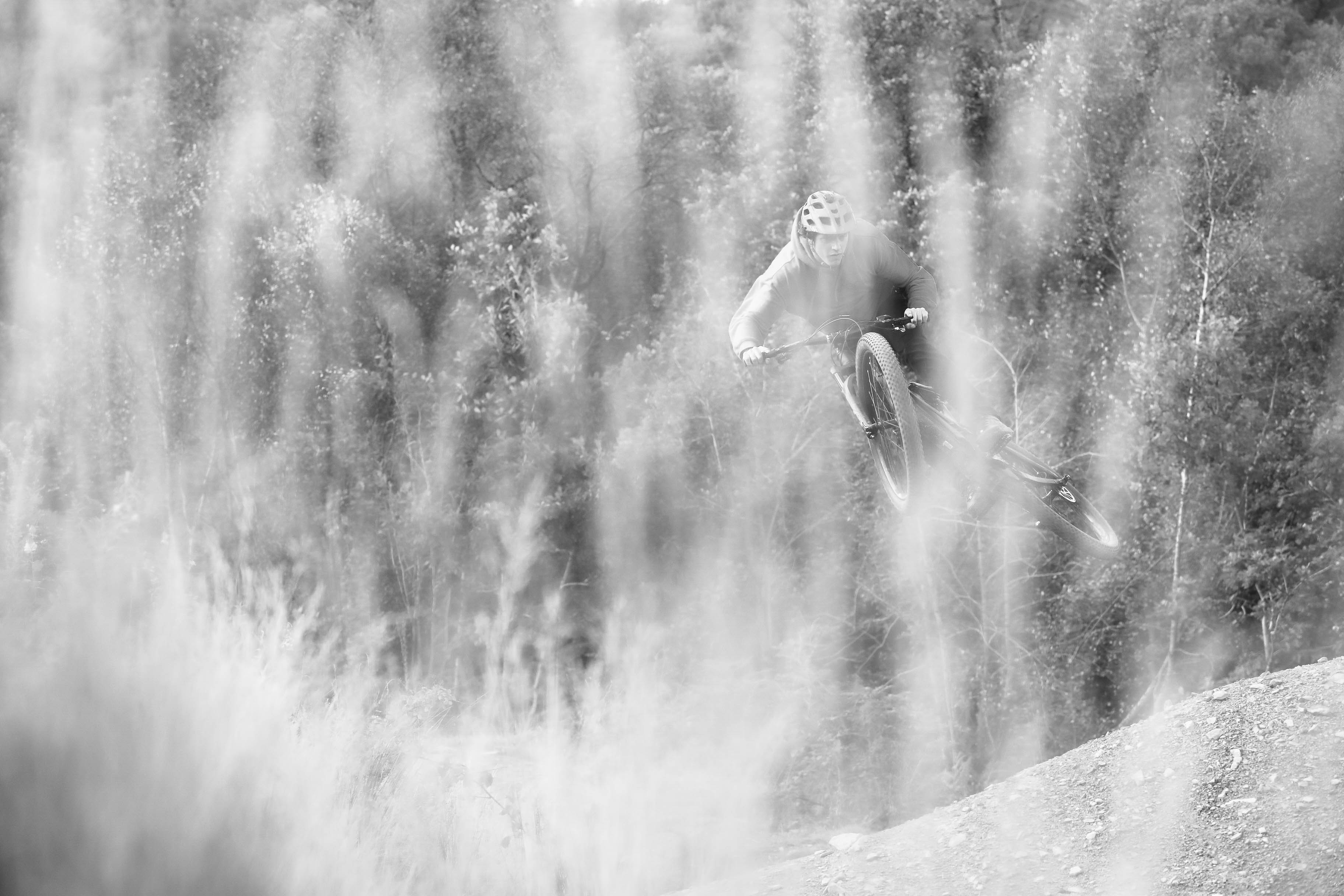
But what about down? Well the 160mm of travel will certainly soak up the hits well on both, but it’s the drive out of the terrain that distinguishes the character of mtb vs e-mtb right?
On a mtb pick and place is inherently straightforward, the muscle memory tuned for the timing, the lean and the drive through the crank to the wheel. Its nice to have the contact with the ground, to use the shape of the ground to generate speed. Well, the good news is that you can still do that on a e-mtb.
One of the most striking things during the comparison tests is the difference between standard tyres/plus tyres on both mtb and e-mtb. In some ways it’s the same kind of argument the Luddites talk about when comparing hardtail vs full suspension. It’s the same kind of thing between full sus (2.35) and full sus plus (2.8/3.0). It’s certainly a rougher ride on mtb with standard tyres but ultimately you’re noticing tyres rather than weight.

So what did we learn? Apart that is from halving the time taken to do a two hour enduro loop that involved almost 3000ft climbing and a similar amount descending taking in six 2-3 minute descents.
Essentially the focus is more about the technical riding aspect and technique than about the bigger picture of ‘getting around the loop’ for the climbing simply goes by in a flash. Heart rates were in fact marginally higher on the mtb on some rides but on others we found higher heart rates on e-mtb. It really depends on the frame of mind of each rider. What the results ultimately show is how close the two can be in terms of effort and how far apart they are in time. As the results of enduro loop show below:

